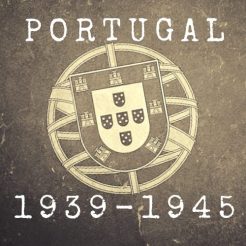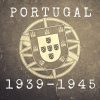Sultana
(Cape Verde, Portugal)
Captain:
Type: Cuter
Tonnage: 21,26
Owner: Vergilio Carlos Rochetau
Homeport: Saint Vicente, Cape Verde
Built: Saint Vicente, Cape Verde (1933)
Event: Rescued 23 crew members from the British merchant Auditor leaving them in the Saint Vincent Island, in Cape Verde.
The chief-officer and the 23 men of the British Freighter's "Auditor" had already spotted the island of Saint Vincent, in Cape Verde, at the distance, when they were detected by the sailing vessel "Sultana" that picked them up and left at port on the 16th july 1941.
The lifeboat had been at sea for 13 days carrying 7 Europeans and 16 Indian crew members. The situation was becoming difficult as water and food supplies were running low, despite the rationing program that started on day one.
Upon arriving at the port of Saint Vincent, they were greeted by the local authorities and countless residents. Several castaways were housed with members of the local British community.
Two other lifeboats, carrying 24 men each, also arrived on the archipelago, but at island of Santo Antão. The first on July 15, with the captain on board and, two days later, the other led by the second officer.
According to the Portuguese documentation the crew was repatriated in two groups. The first left on August 21, 1941 in the steamer "Colonial" for Cape Town, South Africa, and the second on September 10, 1941 in the also Portuguese "Guiné" for Bathurst.
The account of Chief-officer H. T. Wells, found by the “Sultana”, states although that they left Saint Vincent aboard the “H.M.S Gorlestone” on 18 September for Bathurst.
The sinking of the Auditor
The "Auditor" left Oban, Scotland, on 22 June 1941, carrying 5100 tonnes of general cargo, including 12 aircraft. The destination was Cape Town and to get there safely they travelled with convoy OB-337, which gathered ships with several destinations in the South Atlantic.
On the 30th the convoy dispersed, at which time the "Auditor" took the last section of his journey by himself, but on the 4th and July, at two o'clock in the morning, they were struck by a torpedo on the port side that caused a explosion that echoed throughout the ship.
A quick check inside the hull confirmed that it was getting flooded and that the "Auditor" was sinking. One of the four lifeboats had been destroyed in the wake of the blast, so the survivors had to be distributed through the remaining three who had been thrown into the water. The ship took about 18 minutes to sink.
Several crewmembers were forced to jump into the water and were later collected by the three boats. Of the 71 crew, one died.
One of the vessels had a radio set that was used to send distress messages. Although there was no reply, they decided to stay in the vicinity of the sinking area hoping that some ship would have heard the communication.
After 36 hours, without news, they decided to sail for Cape Verde, the nearest land. Four hours after sailing to the archipelago, the boats became separated, only to reunite themselves in Saint Vicente island where they met days latter.
Auditor
(GB)
Captain: E. Bennett
Type: Steam Merchant
Tonnage: 5444
Owner: T & J Harrison
Homeport: Liverpool
Built: Scotland, 1924
Fate: Sunk by U-123 on 4 July 1941. One killed and 75 survivors.
Resources:
- Archives: Arquivos Nacionais Torre do Tombo (PT); National Archives UK, Kew (GB); Arquivo Histórico da Marinha (PT); Arquivo Histórico do MNE (PT);
- Sites: uboat.net;
- Books & Publications: Shipping Company Losses of the second World War, Ian M. Malcolm;

